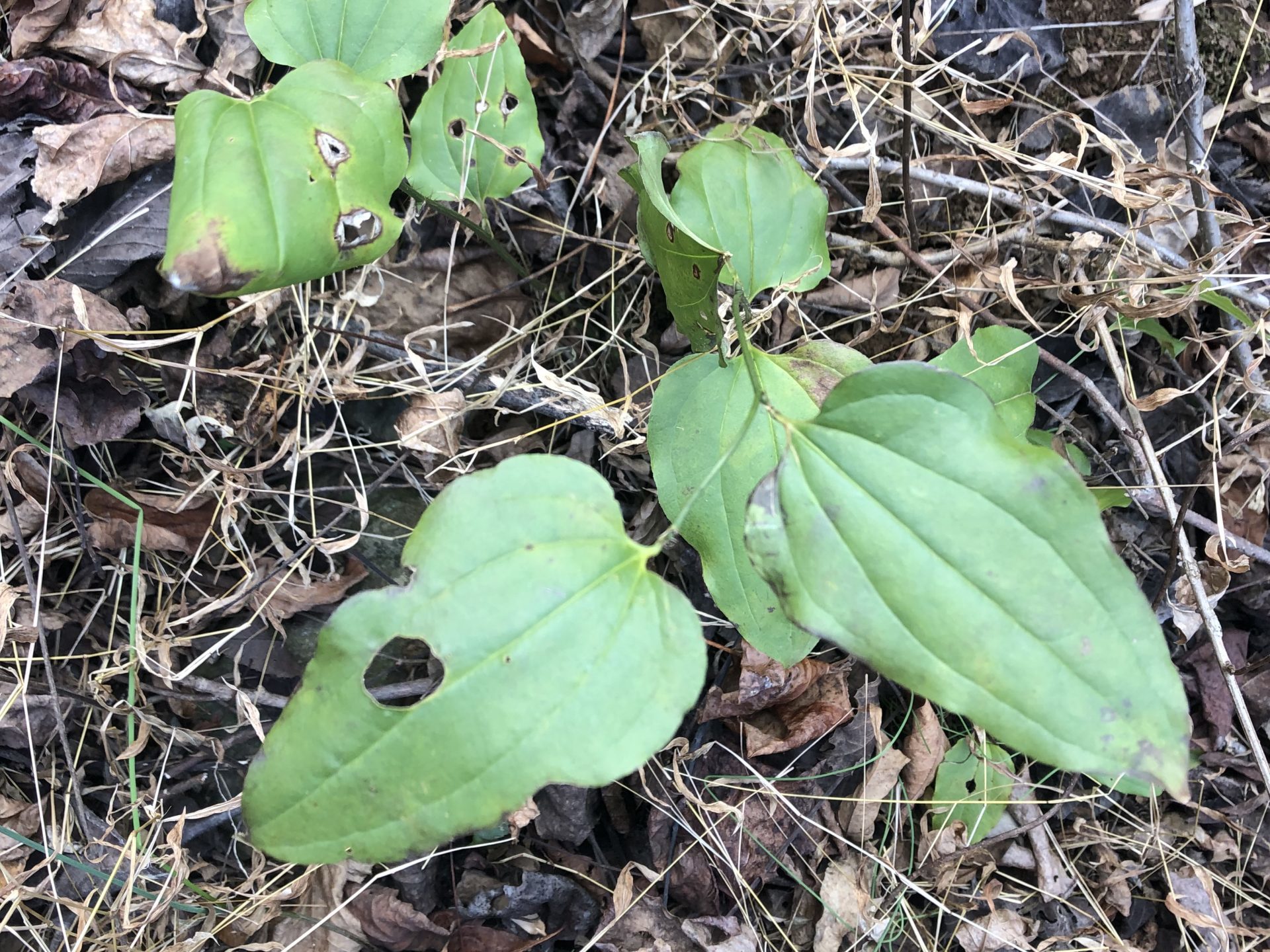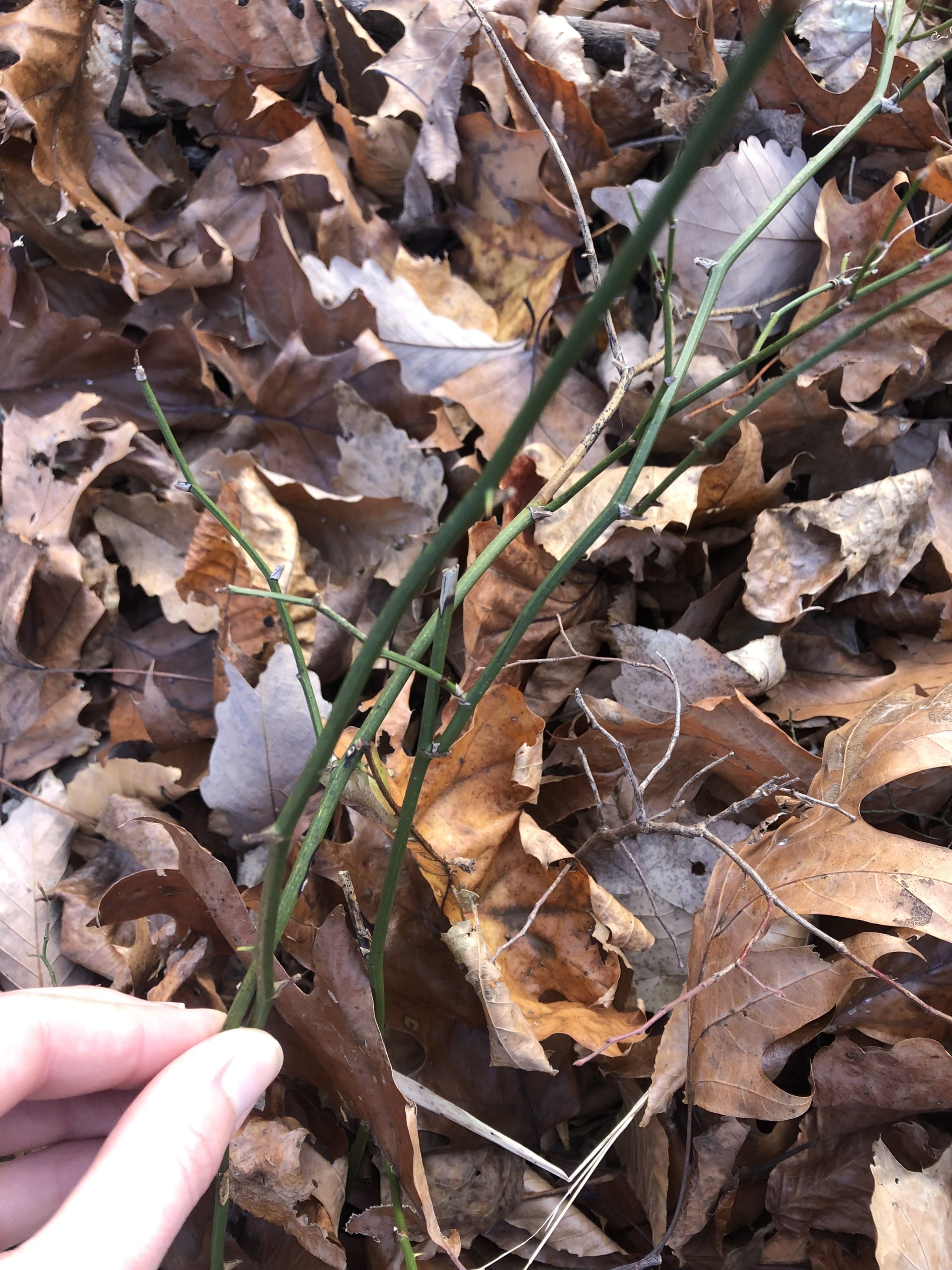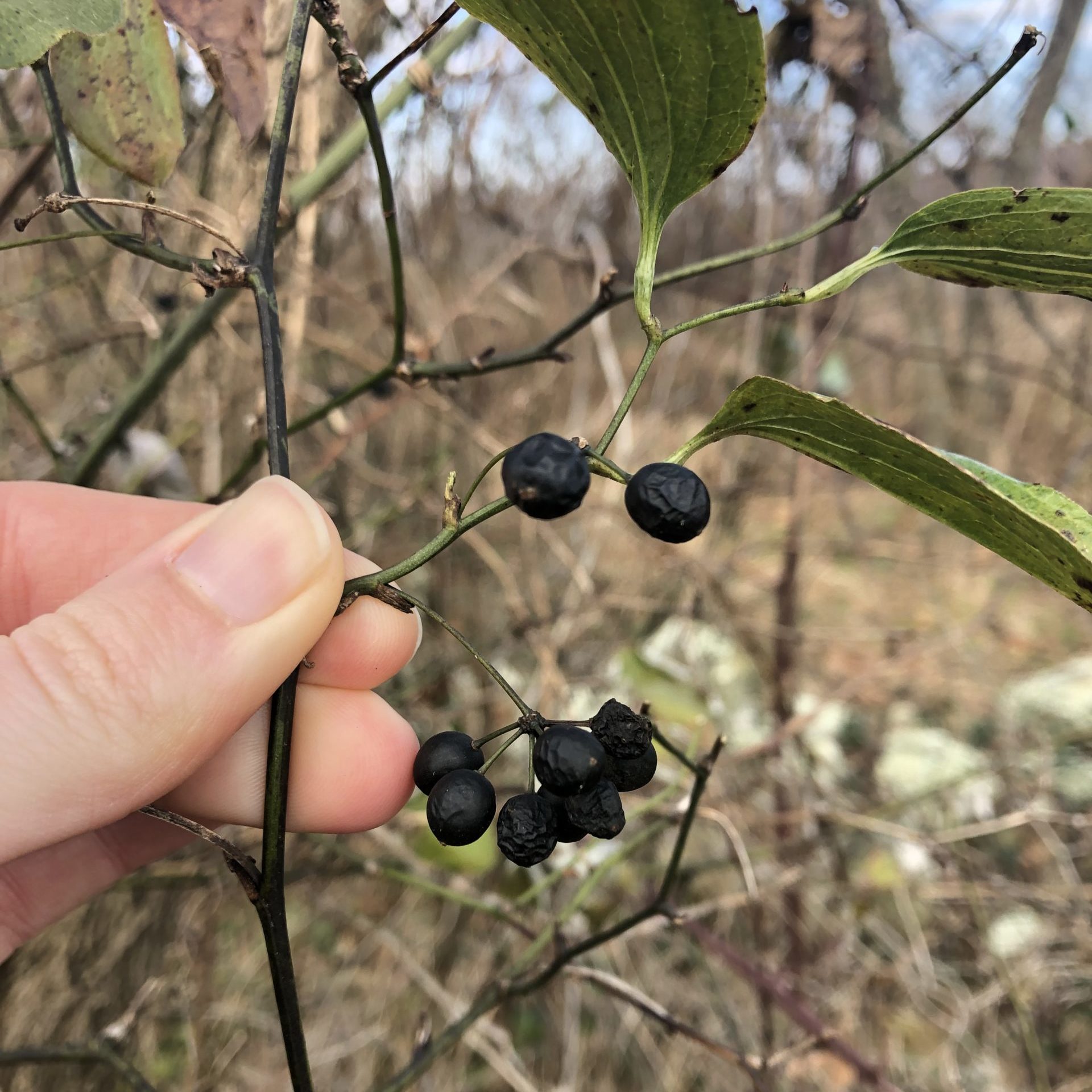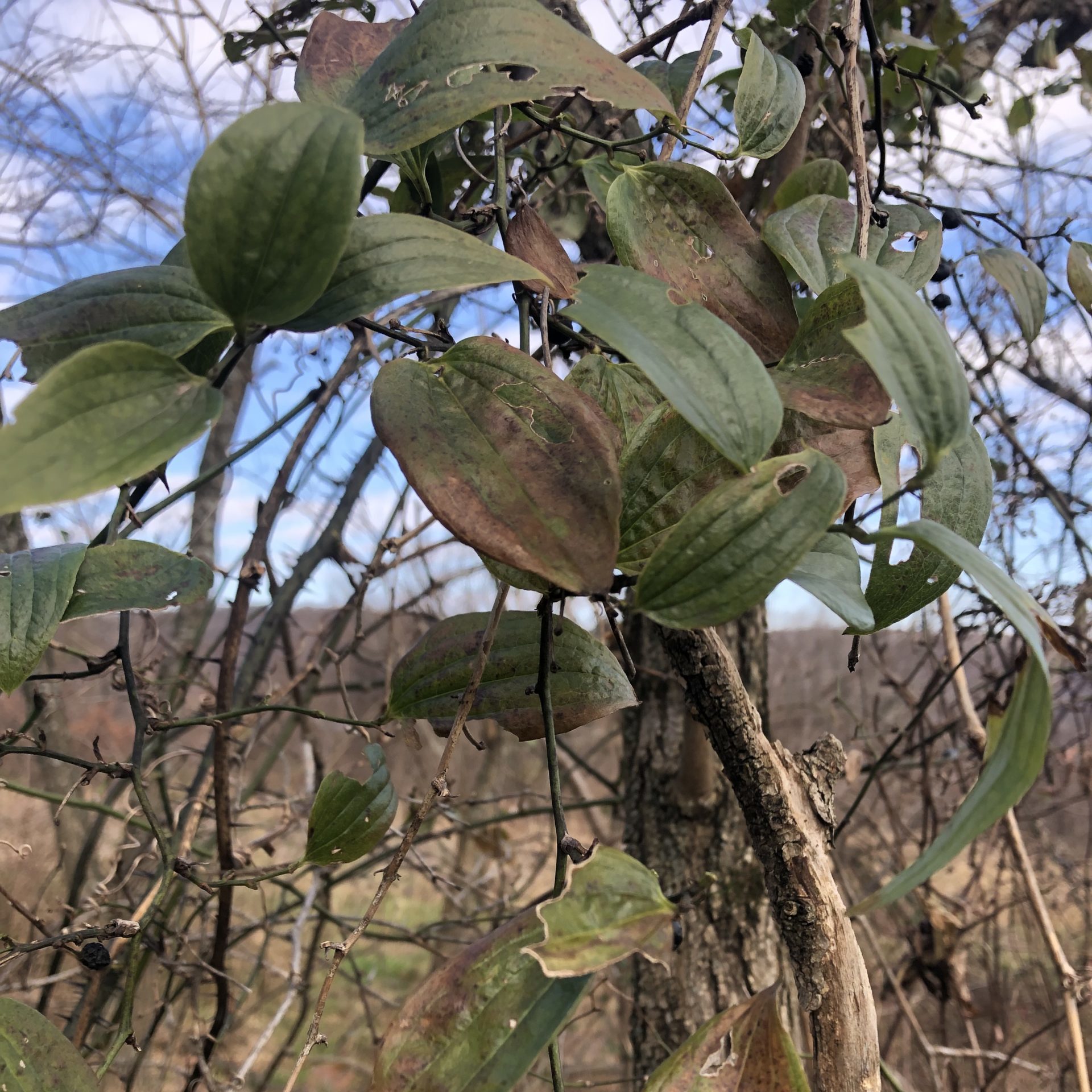
Thorny, twisting, catching, sharp. These words, and other more colorful ones, are often used to describe common greenbrier (Smilax rotundifolia), a familiar early successional and understory plant. During my outdoor walks, I typically see greenbrier climbing along fence rows and trees. Unfortunately, I am also intimately familiar with its prominent thorns and propensity to ensnare the unsuspecting passerby.

Common greenbrier naturally occurs throughout the eastern United States and can be found in a variety of landscapes, from successional fields to forest understories. Its landscape versatility can be attributed to one unique trait—its ability to photosynthesize under both low and high light conditions. Additionally, greenbrier stems can photosynthesize like leaves, which allows the plant to continue food production even after defoliation or animal browse.
As a species, greenbrier is evergreen to partially deciduous and is perennial by nature. I often observe it as a climbing vine, but in the right conditions, greenbrier can form a small tangled bush. Its leaves are simple, alternate and leathery to the touch. New leaves and shoots are quite tender and supplement a variety of wildlife diets. In the spring, they bloom unsuspecting clusters of light-yellow flowers.
Greenbrier also has two defensive traits that help it survive various threats. The most obvious, of course, is its thorns! Not only do thorns discourage human association, but they also protect new stems from deer and rabbit browse. Greenbrier also sprouts via underground stems, called rhizomes. These rhizomes are the primary reason why physical control methods often aren’t enough to remove unwanted greenbrier; rather, a combination of physical and chemical methods generally does the trick. For more information on greenbrier control check out this great article from our friends at Clemson Cooperative Extension.
While this plant is the bane of hikers and homeowners alike, it serves a valuable role in our local ecosystem by providing edible and structural benefits to wildlife. Not only are its leaves a year-round food source for browsing mammals, it is a particularly important plant for deer in the winter as more desirable vegetation becomes less available. Its dark, blue-to-black berries persist throughout late-winter and early-spring, providing an important food source for over 40 bird species, including cardinals, white-throated sparrows, American robins, catbirds, wild turkeys, common grackles, and northern flickers. Structurally, greenbrier can form impenetrable thickets that create cover for small mammals and birds. I know I certainly wouldn’t want to venture into a grove of thorns!
While this native plant can be quite irksome to humans, it provides food and habitat for many animal species, particularly throughout the coldest months of the year. Personally, I am inclined to classify this thorny vine more as a friend than a foe. I would encourage any homeowner to “let it be” on undeveloped portions of your property and take pleasure in noting what critters make use of it!
Hallie Harriman is PEC’s Potomac Watershed Field Representative working in Clarke, Loudoun and northern Fauquier County. She can be reached at [email protected]


